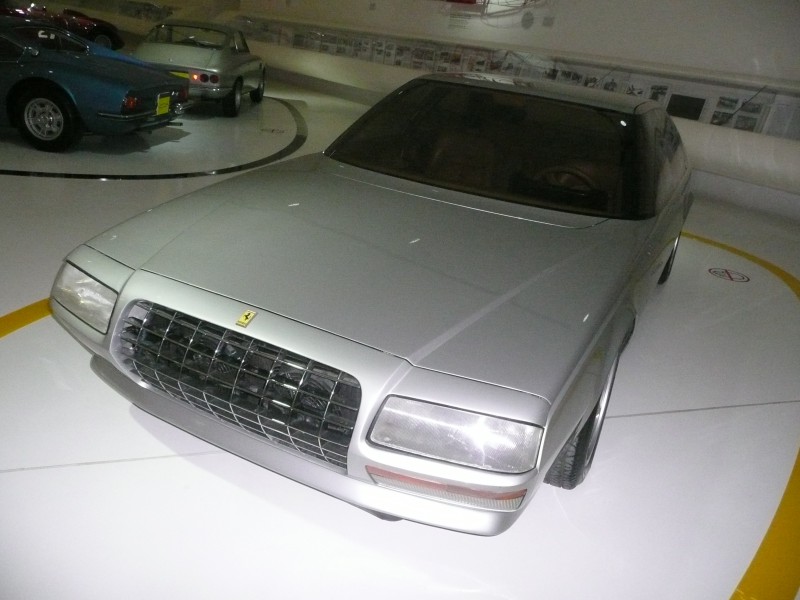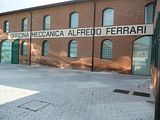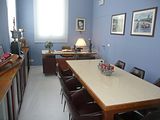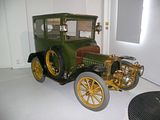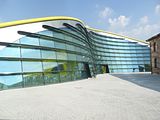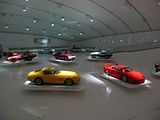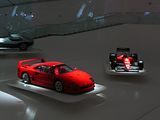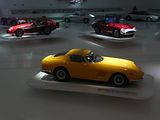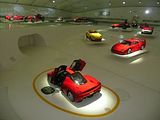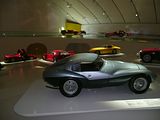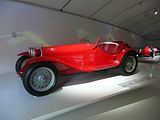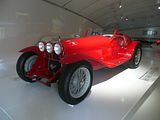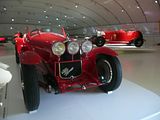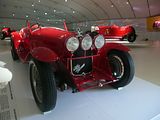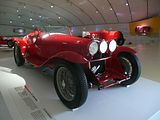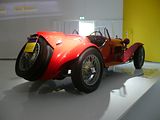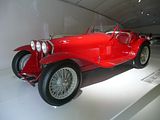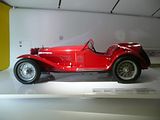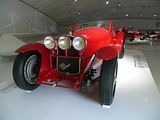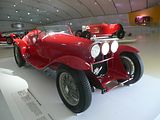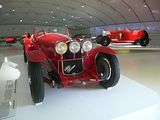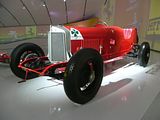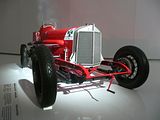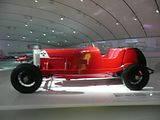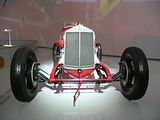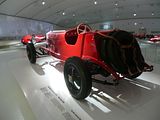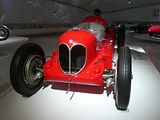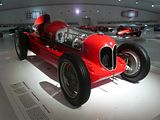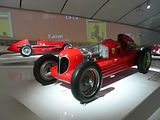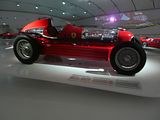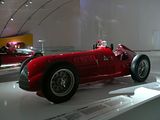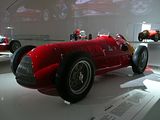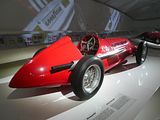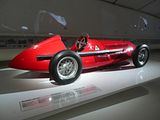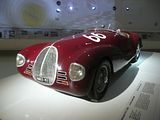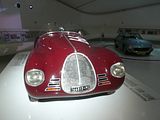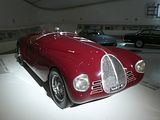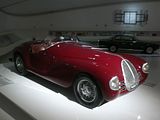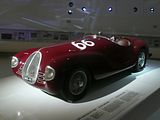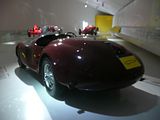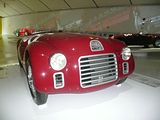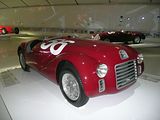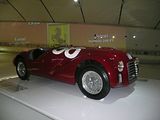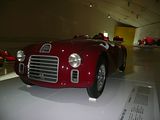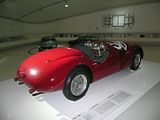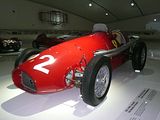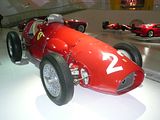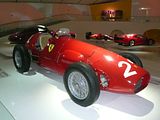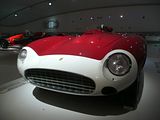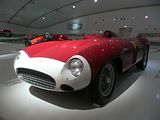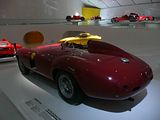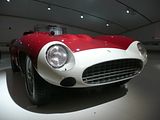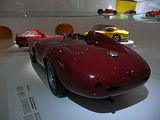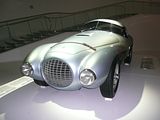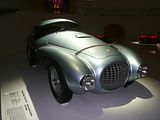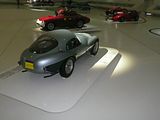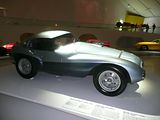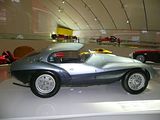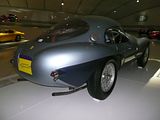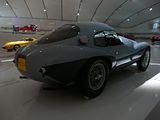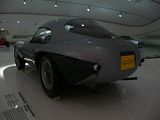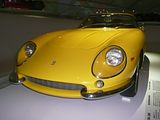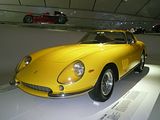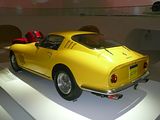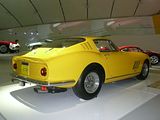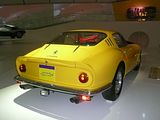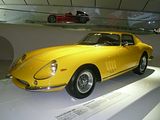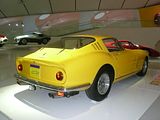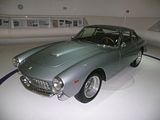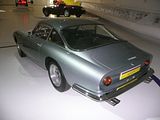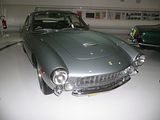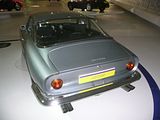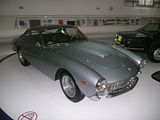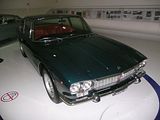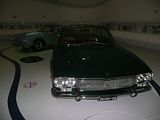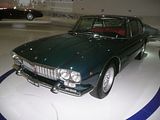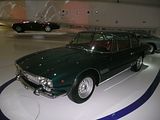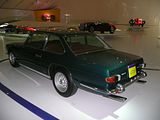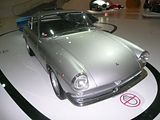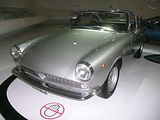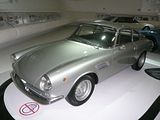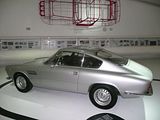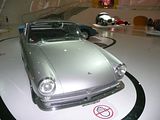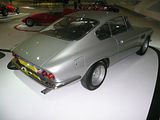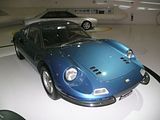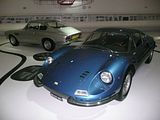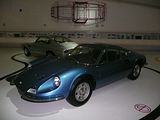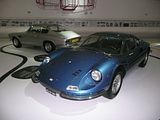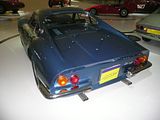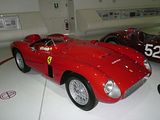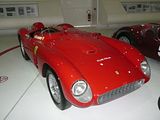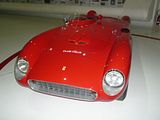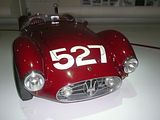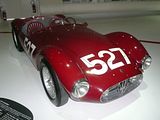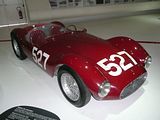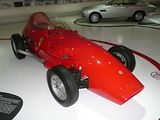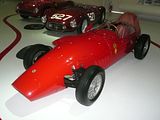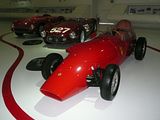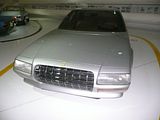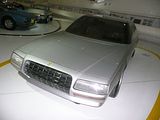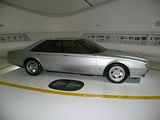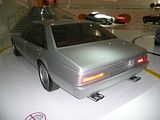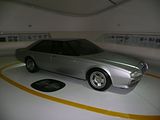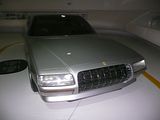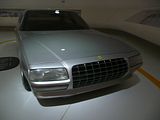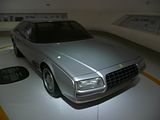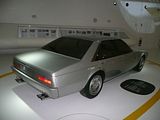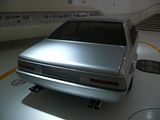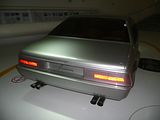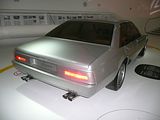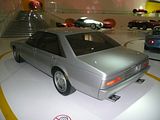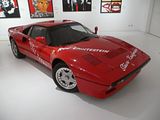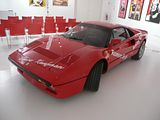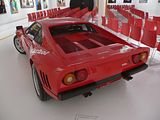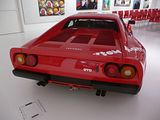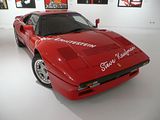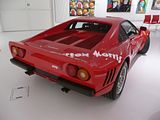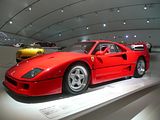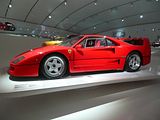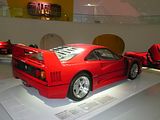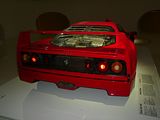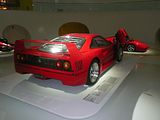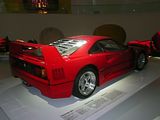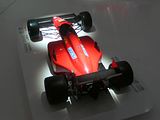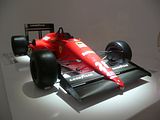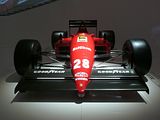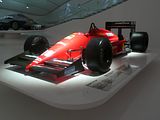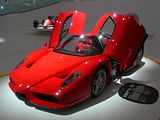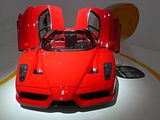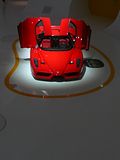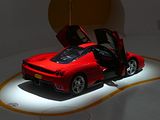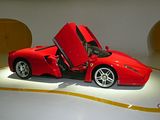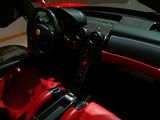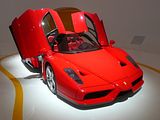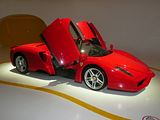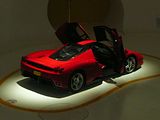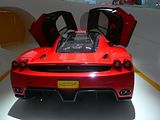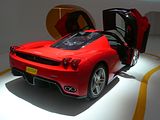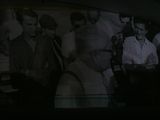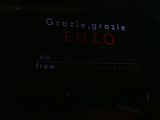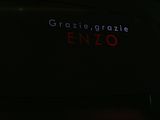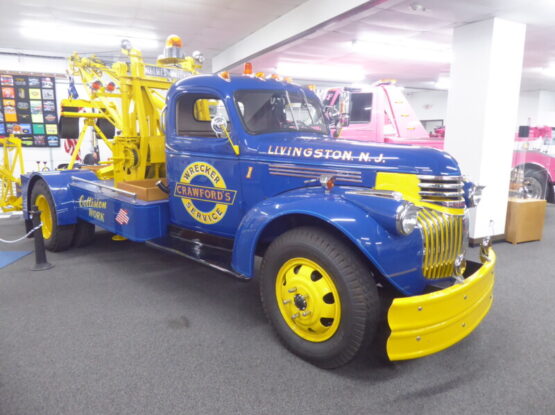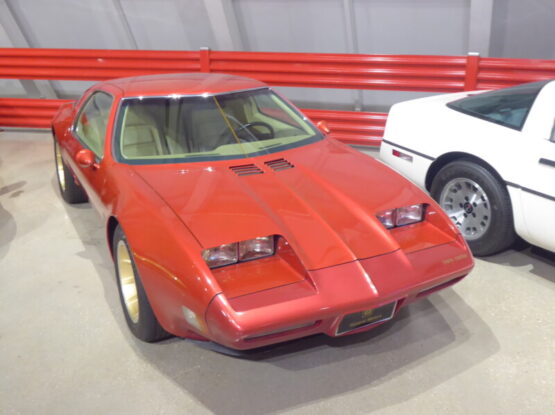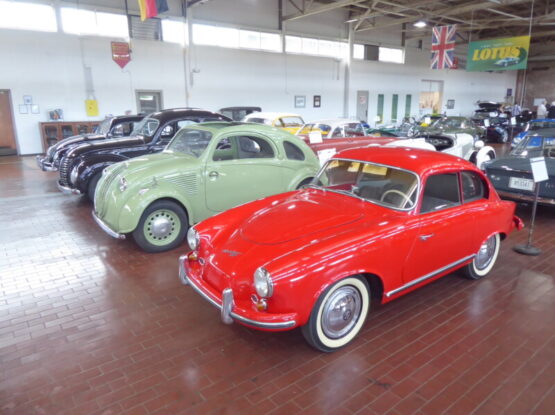Enzo Ferrari was born in February 1898 in the centre of Modena, a lovely historic Italian town in the Emilia Romagna region, 20 km west of Bologna. Although everyone associates Ferrari with the nearby village of Maranello, where Enzo acquired premises in the early 1940s as he set up his own business, Modena has not forgotten its association with the man who came to be known as Il Commendatore. The family house has been beautifully restored, and as well as the workshop where his father, Alfredo, worked, it includes many artefacts from the Ferrari history, including the small 1903 de Dion-Bouton car which the family owned.
A striking modern building has been added alongside the historic house, and this houses 20 cars which played an important part in the history of this most iconic marque. There is a small cinema area, as well as a cafe and gift shop. This museum concentrates on the story of Enzo Ferrari, Scuderia Ferrari and motor sports, whilst the sister museum, Galleria Ferrari, located in Maranello concentrates on the cars, the image and the brand with an ever changing array of displays. You can easily visit both museums in a day, and if you need it, there is a shuttle bus that runs between the two. Car parking is free at the Casa Enzo Ferrari (which is just 5 minutes walk from the main Modena railway station), where as you have to pay in Maranello. The crowds all go to Maranello, having yet to discover the delights of this museum.
When I went through the doors into the museum, I was stunned! Even though I had seen pictures, this was still a surprise. And a very pleasant one at that. There are a line of cars down one side, all mounted on plinths, and this area slopes down to the far end of the building, which is then level with the main display area, which in turn slopes down a bit back towards you. There is a viewing gallery which is the other side of the wall separating the museum from the outer corridor, so you can gaze down on the entire museum. There were only a handful of people present in all the time I was there, which helped to give a real feeling that this was somewhere special.
I could see lots of lovely cars, but the very first one I looked at in detail was one of the very nicest of the lot. And no, it was not a Ferrari, but an Alfa Romeo. This was a 1932 8C2300 Spider Corsa, the model which won the Mille Miglia in 1932, 1933 and 1934. In his Scuderia Ferrari team, Enzo himself competed in this model in 1931 and was placed second, behind legendary Alfa driver Tazio Nuvolari.
Placed along side the 8C was an even more important Alfa in the history of Ferrari, this being the 1924 RL Targa Florio. It was the car in which the young Enzo won the Coppa Acerbo in 1924, and which he had driven in the 1923 Targa Florio. Although in later life, Enzo’s team would go on to compete vigorously against Alfa, just like any other rival, it is said that he never lost his affection and profound respect for the marque, and when you see these beautiful machines and learn how dominant they were in motorsport in the 1920s and 1930s, it is not hard to see why. During the 1920s, Enzo came to realise that his days as a race driver were over, and he set up his own racing team, Scuderia Ferrari.
Competition got much stiffer in the mid 1930s, with a huge onslaught coming from the Germans, so Alfa responded with this, the incredible 1935 Bimotore. This GP car had two engines, one in front and one in the back, sharing a single transmission. On 15th June 1935 the car set a new speed record of 321.4 km/h which was achieved on the Firenze to Mare autostrada.
By 1937, Scuderia Ferrari had designed another legendary Alfa, the fantastic 158. It made its debut at the Grand Prix in Livorno in July that year and continued to evolve, with more and more power being added, until it reached 425 bhp. When you consider how small and light this car is, you can imagine that it was astonishingly fast, and also required some skilled and courageous drivers to get the best out of it. The 158 continued to be developed after the War, culminating in the 159 model which appeared in 1951.
Long before the emergence of the Alfa 159, Ferrari had achieved his ambition of building his own cars. The first one, called the Ferrari with no name, was this, the 1940 Auto Avio Construzioni 815. 2 of them were built, but sadly all trace of the other one was lost during the war, and it has never been heard of since. Ascari drove this one in the 1940 Mille Miglia.
This gorgeous Ferrari 125S first appeared in 1947. It was the first car to bear the Ferrari name, and was unique at the time in sporting a V12 engine. It won the first race in which it competed, the 1947 Rome GP. Sadly, this is not the original, which has been destroyed, but this is a very faithful replica of that car.
The great Alberto Ascari won 11 our of 15 races with this 1952 Ferrari 500 F2, and dominated the sport. Ferrari won the title in 1952 and 1953.
Ferrari’s dominance of the sport continued throughout the next few years. This 1955 Ferrari 857S was the car which won the 1955 Mille Miglia. That victory meant the team had won 8 out of 10 Mille Migla between 1947 and 1955, with a roll call of drivers that included Biondetti, Marcotto, Villoresi, Braccio, Cetelotti and Taroffi.
By the 1950s, Ferrari was putting at least as much effort into road cars. The early ones featured bodies styled and designed by a variety of the famous Italian coachbuilders, which is why there appear to be so many different models, and so few of each of them. One of the most dramatic of all designs was this, the 1951 212 Export Fontana. The body was designed by Reggiani, and it was built by Fontana, and the car was immediately nicknamed “The Egg”. It took part in the 1951 Mille Miglia.
The 275 GTB/4 needs no introduction, and these days is one of the most valuable of all Ferrari road cars, selling for an seven figure sum. The car replaced the long running 250GT series, and was the first Ferrari to have 2 Overhead Cams per cylinder bank.
Ferrari did not have the luxury sports car market all to themselves, though, and a pairing of cars in one corner of the museum shows two choices that would have faced the lucky wealthy buyer in the mid 1960s: Ferrari 250 GT Lusso or the equally lovely Maserati Mexico. What a nice choice to have.
Ferrari was well aware of the dangers of taking the marque down market, so when he produced a 1 litre engine, the car in which it was installed never bore his name. Instead. this stunning Coupe was called the ASA 1000. Staggeringly expensive at the time, it did not sell in significant quantity.
Even the small Ferrari offered in the late 1960s and early 1970s did not officially bear the Ferrari name. The Dino 246GT is now seen very much as a real Ferrari, though. Named after Enzo’s son Dino (Alfredino), this 6 cylinder car now has a devoted following, and who can wonder why, as it is one of the most beautiful cars ever made.
Modena has long been the area of Italy responsible for producing the most amazing sports and racing cars, and another display with three cars in shows three different marque who were all active in the area. Ferrari’s 250TR Testarossa from 1956 is shown with the lovely 1954 Maserati A6CGS and the 1959 Stanguellini Formula Junior.
One car I was very excited to see was this, the Pinin. Produced as a concept in 1978, the idea of a 4 door Ferrari was seen as too radical and the car remained just a stunning concept. I had read that some years ago it had been sold off by Pininfarina, who had produced it, so assumed it was in a private collection somewhere. I had no idea it was here. It still looks great now.
This 288 GTO was not in the main display, but parked up in a separate room off the main display area. It is quite staggering to realise that this is now a 30 year old design.
The F40 remains a special car, not least because it was the last model that Enzo saw before his death in August 1988. Produced to celebrate 40 years of Ferrari badged cars, it was originally intended that just 400 be made. In fact 1315 were produced, and every single one of them remains a crowd stopper even now, more than 25 years later.
Displayed alongside it was, the 1987 F1-87 car. It was in this car that, just 28 days after Enzo’s death, the Ferrari drivers of Gerhard Berger and Michele Alboreto scored an emphatic 1, 2 victory in the Italian Grand Prix at Monza. A more fitting tribute to Il Commendatore there could not have been.
Of course, Ferrari has continued, and in honour of that, and the fact that it bears his name, there is the 2002 Enzo Ferrari on show, and this car seemed like a magnet to every small boy that was visiting. When they get older, no doubt they will be as fascinated by the amazing history of this marque and what was achieved under the leadership of one man, but until they do, well, who can blame them for drooling all over this iconic supercar?
And a tribute to what Enzo achieved is something that you should see. Every 20 minutes or so, the lights dim, and a 10 minute presentation, with no words but lots of stirring Italian music, plays on the huge screen over the main door of the museum. I was in the museum for long enough that I saw it several times, and it truly does pay tribute to an incredible man. Everyone stops to watch. Video clips from a snowy Modena, town of his birth through his racing career to the success of the road cars all feature, and it ends with Puccini’s Nessum Dorma blasting out of the sound system and the simple words “Grazie Enzo” on the screen. It is impossible not to be moved by it when you see it.
This is an incredible place. There may be only 20 cars on show, but it is well worth the entry fee. If you go to the Galleria Ferrari in nearby Maranello as well, then it is just €13 to get in, and worth every Cent of that. More details can be found on the museum’s own website: http://www.museocasaenzoferrari.it/en/museo/

